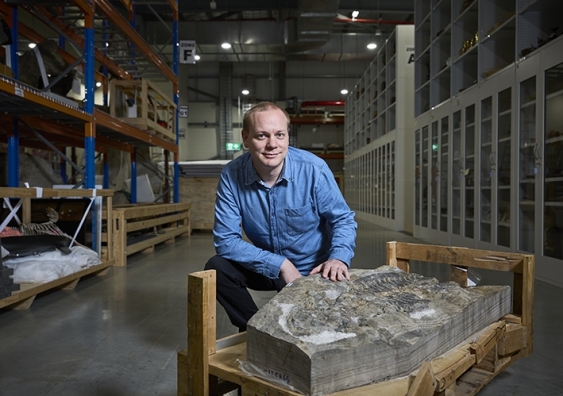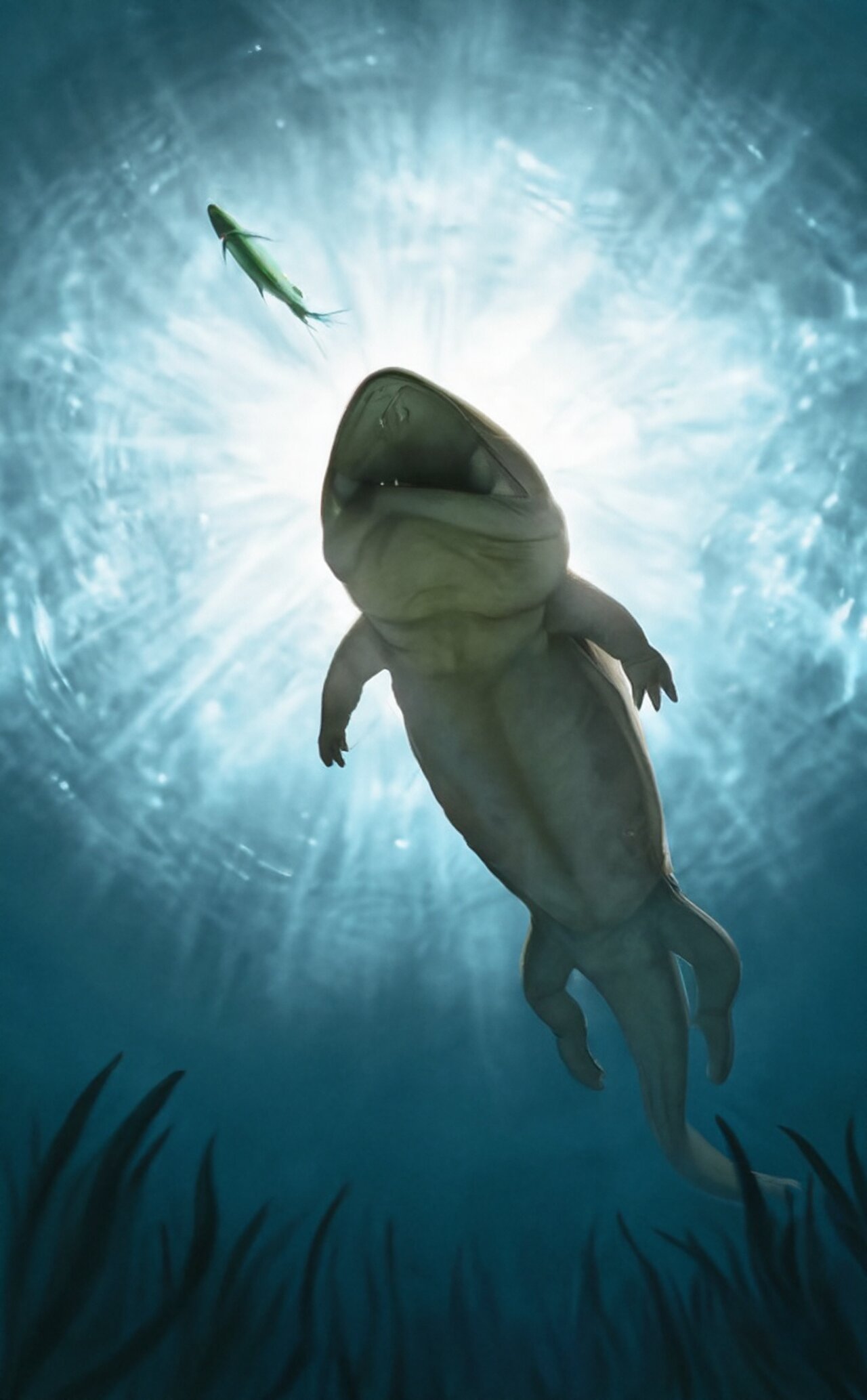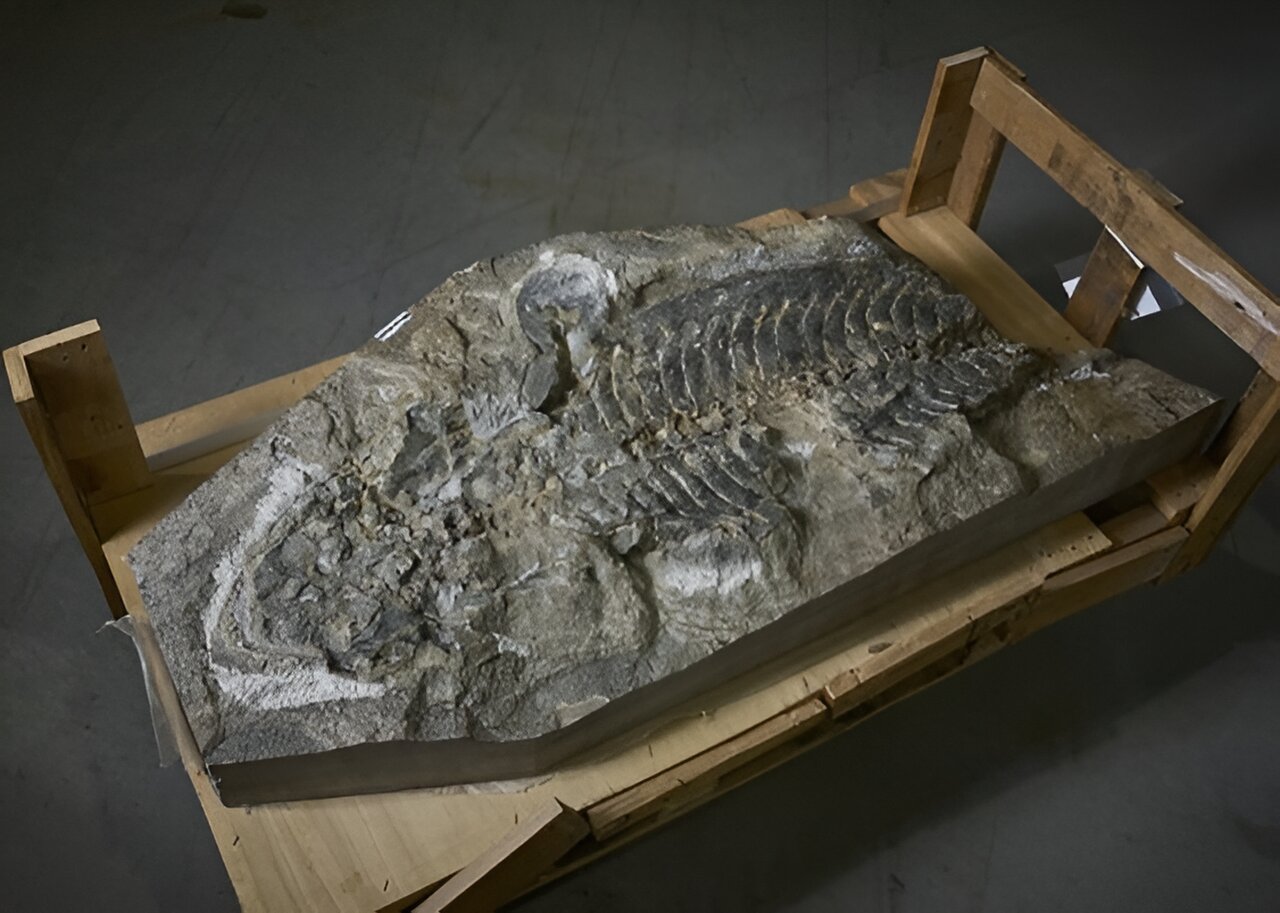Sydney Basin rocks hide secrets
By Dr Peter Mitchell OAM
The description of a fossil predatory amphibian with a crocodile like body reported by the Pittwater Online News on 9 August prompts me to ask what other secrets do Sydney’s sedimentary rocks hold and how can we reveal them?
In the past many fossils were recovered from brick pits by observant quarry men and drawn to the attention of museum curators. This rarely happens today because quarry men have become plant operators and no longer wield picks. One of the richest fossil assemblages was found in a brick pit at Brookvale in the 1920s. It included 28 species of freshwater fish, numerous insects and plants, and traces of amphibians similar to the that recently described from Kincumber. That quarry has been replaced by urban housing.
A curious mind and a sharp eye are prerequisites for making new discoveries and it can be done by anyone provided they have access to likely sites. During Covid travel restrictions and after storms in mid-2021, one Northern Beaches resident discovered unusual trackways on shale rocks near Turimetta Head. He drew them to our attention and we made two videos about them before they disappeared under a recovering beach. Two hypotheses about what may have created the tracks were discussed, one of which implicated a creature very like the Kincumber fossil.

Enigmatic tracks believed to be made by a vertebrate slithering through mud and preserved in ~248 million year old shale near Turimetta.
What has this discovery to do with the newly named Temnospondyl? I believe that the two are linked. The tracks are in the same age strata as the Kincumber quarry fossil, and the size and form of the animal that slithered around on the mud at Turimetta are consistent with the fossil. This presents a hypothesis worth testing but we need another set of tracks. More sharp eyes would help and they can be enhanced if the broader community is primed with more geological understanding. Guess what? A painless education scheme for expanding knowledge is coming to northern Sydney in the guise of the Ku-ring-gai GeoRegion, a 440 sq km area located between Berowra Creek and the Northern Beaches and embracing the Ku-Ring-Gai Chase National Park
Thanks to FOKE (Friends of the Ku-ring-gai Environment Inc.), over 50 important and accessible geological sites are to be linked into self-guided geotrails with signage and a touring app. Six initial geotrails are planned including one around Long Reef and all are supported by local government and the NSW National Parks and Wildlife Service. They should be operational in 2024. Trial runs have shown that the geotrails will be popular.
But the GeoRegion proposal is bigger than just pleasant bushwalks. As the trails are used, they could become a trigger to nominate the GeoRegion as a UNESCO Geopark. UNESCO has established 195 Geoparks in 48 countries and are aiming for 500. New Zealand listed its first this year, Australia has none.
By promoting an area’s geological history, Geoparks can give people a greater awareness of the dynamics of the land they live in and provide opportunities for education and local employment through sustainable geotourism, whilst protecting the natural resources on which the geopark is based. We look forward to some curious individual reporting new stories very soon.
More in 2022 report: The Ku-Ring-Gai GeoRegion UNESCO Proposal
Report Dr. Mitchell refers to (Issue 594): Sydney Scientists Name New Species Of Giant Amphibian Found In Retaining Wall
August 9, 2023
Arenaerpeton supinatus was discovered in rocks cut from a nearby quarry that were intended for the building of a garden wall.

Lachlan Hart says the fossil is a unique example of a group of extinct animals known as temnospondyls, which lived before and during the time of the dinosaurs. Photo: UNSW Sydney/Richard Freeman
A 240-million-year-old fossil of an amphibian that was found in a retaining wall in the 1990s has been formally named and described by scientists at UNSW Sydney and the Australian Museum.
The fossil was originally found by a retired chicken farmer in rocks obtained from a local quarry intended for use in the construction of a garden retaining wall and was subsequently donated to the Australian Museum in Sydney.
Palaeontologist Lachlan Hart, who holds joint roles with UNSW Science and the Australian Museum, says the fossil – named Arenaerpeton supinatus, meaning ‘supine sand creeper’ – shows nearly the entire skeleton, and remarkably, the outlines of its skin.
“This fossil is a unique example of a group of extinct animals known as temnospondyls, which lived before and during the time of the dinosaurs,” says Mr Hart, a PhD candidate in the School of Biological, Earth and Environmental Sciences (BEES) at UNSW.
“We don’t often find skeletons with the head and body still attached, and the soft tissue preservation is an even rarer occurrence.”
Arenaerpeton inhabited freshwater rivers in what is now known as the Sydney Basin during the Triassic period, 240 million years ago. Mr Hart says it most likely hunted other ancient fish such as Cleithrolepis, but apart from that, there is not much evidence that tells us about the other animals that Arenaerpeton shared the land and waters with.
“Superficially, Arenaerpeton looks a lot like the modern Chinese Giant Salamander, especially in the shape of its head,” Mr Hart says.
“However, from the size of the ribs and the soft tissue outline preserved on the fossil we can see that it was considerably more heavyset than its living descendants. It also had some pretty gnarly teeth, including a pair of fang-like tusks on the roof of its mouth.”

An artist's impression of Arenaerpeton supinatus, the ancestor of today's Chinese Giant Salamander. Credit: Jose Vitor Silva
Mr Hart says what is exciting about the discovery is that Arenaerpeton is large – estimated to be about 1.2m from head to tail – when most other closely related animals that lived at the same time were small.
“The last of the temnospondyls were in Australia 120 million years after Arenaerpeton, and some grew to massive sizes. The fossil record of temnospondyls spans across two mass extinction events, so perhaps this evolution of increased size aided in their longevity.”
Dr Matthew McCurry, Senior Lecturer in UNSW’s School of BEES and Curator of Palaeontology at the Australian Museum says the fossil is a significant find in Australian paleo history.
“This is one of the most important fossils found in New South Wales in the past 30 years, so it is exciting to formally describe it,” says Dr McCurry, who is also a co-author on the study. “It represents a key part of Australia’s fossil heritage.”
The study has been published in the Journal of Vertebrate Paleontology, and the fossil will be on display at the Australian Museum, Sydney, later this year.

Arenaerpeton looks a lot like the modern Chinese Giant Salamander. Credit: UNSW Sydney/Richard Freeman
Lachlan J. Hart et al, A new chigutisaurid (Brachyopoidea, Temnospondyli) with soft tissue preservation from the Triassic Sydney Basin, New South Wales, Australia. Journal of Vertebrate Paleontology (2023). DOI: 10.1080/02724634.2023.2232829
Pittwater Online Ran ''WRITTEN IN STONE: A 245 Million Year Old Mass Breeding Event'' In 2022;
Published 4 Aug 2022 by Pittwater Pathways
Paul Cronk’s discovery of fossil trackways at Turimetta indicates a mass breeding event took place there about 245 million years ago. In this video scientists from the Australian Museum and Macquarie University are examining the fossils. Their discussion and reasoning makes a fascinating record of the scientific process in action.
Lachlan Hart is a vertebrate palaeontologist currently undertaking his PhD at the University of New South Wales and the Australian Museum. His research focuses on the evolution, systematics and palaeobiology of Mesozoic tetrapods, including temnospondyl amphibians, crocodyliformes and dinosaurs. Lachlan is particularly interested in exploring what can be learnt about extinct animals from studying their living descendants
Dr Patrick Smith is a taxonomist and biostratigrapher researching the Cambrian and Ordovician of Australia and New Zealand. He primarily has worked on fossil arthropods (trilobites and their close relatives). However, he's also occasionally worked on other fossil groups, including brachiopods, gastropods and echinoderms. Patrick is particularly interested in using fossils as key time markers to correlate sequences of rocks on a regional, national, and global scale.
Prof Glenn Brock, palaeobiologist, Macquarie University.
My research activities focus on elucidating the evolution, phylogeny, biodiversity, ecology and biostratigraphy of the earliest (stem group) bilaterian animals that arose during the Cambrian Explosion. My work focuses on studying exceptionally preserved macro- and microfossils from a variety of localities in Australasia and Antarctica. I am particularly interested in the phylogenetic, ecological and biostratigraphic significance of early Cambrian "Small Shelly Fossils" (SSF).
Dr Peter Mitchell OAM is one of Australia’s most respected and experienced geomorphologists.